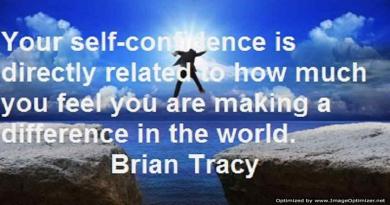Avoiding Eye Contact When Upset

Navigating the complex realm of human emotions is no easy task, especially regarding anger. I’ve observed an interesting pattern: individuals frequently avoid making eye contact when upset. It’s fascinating how our eyes, often described as the portals to our inner selves, can close off during moments of distress. Let’s explore the reasons behind this behavior and shed light on how guilt, anxiety, fear, and even manipulation can redirect our gaze away during fits of anger.
To begin with, it is crucial to understand why eye contact avoidance occurs. Avoiding eye contact is not only driven by discomfort or a desire to withdraw from the situation but also by an instinctive need for self-preservation. When experiencing negative emotions, individuals may subconsciously perceive eye contact as a potential threat or vulnerability. They create a protective barrier by diverting their gaze, safeguarding themselves from further harm.

Moreover, eye contact avoidance is not solely driven by fear or distress. It can also be a manifestation of guilt or shame. When individuals feel remorseful or regretful, avoiding eye contact serves as a way to shield themselves from the judgment they anticipate from others. By evading eye contact, they hope to avoid confronting the consequences of their actions and the potential disappointment of those around them.
Additionally, eye contact avoidance can be a tactic employed for manipulative purposes. Some individuals may purposely look away to exert control over a situation or to create a sense of unease in their counterpart. This calculated move can give them an upper hand, as it disrupts the natural flow of communication and may make the other person uncomfortable or uncertain.
In conclusion, eye contact avoidance during moments of anger is a multifaceted behavior that stems from various emotions and motivations. It is a defense mechanism that protects individuals from potential threats or vulnerabilities. Moreover, it can be a manifestation of guilt or shame and a tool for manipulation. By understanding the underlying reasons behind this behavior, we can gain insight into the complexities of human emotions and enhance our ability to navigate them effectively.
This sheds light on the intricacies of human interaction and reminds us of the importance of empathy and understanding in our interactions with others.
Understanding the Connection Between Anger and Eye Contact Avoidance
It’s important to grasp that anger often leads to avoiding eye contact, as it’s a widespread behavior rooted in various factors such as upbringing, feelings of shame, guilt, anxiety, fear of confrontation, insecurity, and even cultural norms.

When I experience anger, I tend to divert my gaze, a behavior I’ve traced back to my upbringing, where expressing anger was viewed negatively. This act of avoidance can be an unconscious behavior stemming from a deeply ingrained sense of shame or guilt associated with anger.
Research indicates that individuals with high levels of social anxiety or fear of confrontation often avoid making eye contact when angry. I can confirm this observation. When I’m anxious or anticipating a potential confrontation, I find it difficult to maintain eye contact. This behavior serves as a defense mechanism, giving me a sense of control over the situation.
Cultural norms also play a significant role in this behavior. In some cultures, including mine, direct eye contact can be perceived as aggressive or disrespectful, especially during heated conversations. Therefore, when I’m upset, I might avoid making eye contact to adhere to these norms and prevent the situation from escalating.
Shame and Guilt: Hidden Triggers for Avoiding Eye Contact
Dealing with anger may give rise to feelings of guilt and shame, which can lead to averting one’s gaze from the person they are upset with. As someone who has grappled with this issue, I have discovered that my upbringing played a significant role. I was taught that anger was an unacceptable emotion, resulting in feelings of guilt and shame whenever I experienced anger.
Research supports this personal insight. Childhood experiences shape our ability to manage anger, and many of us were taught that expressing anger is undesirable. Negative experiences associated with anger can lead to avoidance behaviors, such as refraining from making eye contact. Additionally, the feeling of shame can be a central factor in this avoidance. We may feel ashamed of our anger and hold ourselves accountable for experiencing these emotions.
Guilt can also be a contributing factor. It may arise from the belief that we have mistreated others or caused them harm. This guilt, particularly when unresolved or lacking an outlet, can contribute to our avoidance behaviors.
It is crucial to comprehend and address these feelings of shame and guilt to combat these concealed triggers for avoiding eye contact. Seeking professional assistance, such as counseling or therapy, can help us learn healthier ways of dealing with anger, which may include maintaining eye contact.
The Role of Guilt in Eye Contact Evasion During Anger
Guilt is a weighty burden that can impact how we express anger, often resulting in behaviors such as avoiding eye contact. It is a complex emotion that intertwines with our anger, shaping our responses. When I experience guilt over feeling angry, I tend to avert my gaze instinctively. It is not a conscious decision but rather a natural reaction to the overwhelming guilt.
Research supports this behavior, indicating guilt can lead individuals to evade direct eye contact during conflicts. It is not just about avoiding confrontation with the person we are angry at but also about the internal struggle we face with our guilt. We avert our eyes not only from the person but also from the feelings of guilt associated with our anger.
However, avoiding eye contact does not alleviate the guilt or the anger. It often worsens the situation, leading to miscommunication and further conflict. It is important to understand that anger is a natural emotion, and it is unnecessary to feel guilty about expressing it. By accepting this, I can learn to maintain eye contact even when I am angry, promoting healthier communication and conflict resolution.
Anxiety and Social Interactions: A Deeper Look
Anxiety plays a significant role in handling social situations, particularly when anger is involved. It acts as a puppet master, manipulating our actions and reactions. The dread of being judged or receiving negative reactions can cause us to avoid making eye contact, resulting in a distant or hostile appearance.

Research has indicated that individuals with social anxiety often:
- Experience fear of rejection and negative judgment
- Feel uncomfortable in new social situations
- Struggle with feelings of inadequacy and inferiority
These fears can manifest as anger, leading to avoiding eye contact as a means of self-protection. It serves as a shield, deflecting potential threats and criticisms.
However, the purpose of avoiding eye contact goes beyond protection. It can also serve as a way to manage overwhelming emotions. When we are anxious, our ability to process information may be compromised. Eye contact requires mental effort, and there are times when we cannot simply maintain it.
Understanding the role of anxiety in our social interactions can assist us in developing better strategies for managing our emotions and improving our communication skills. After all, knowledge is empowering, and when it comes to dealing with anxiety and anger, it can make a significant difference.
Fear of Confrontation and Aggression: A Reason for Eye Contact Avoidance
Fear of confrontation or aggression often leads individuals to avert their gaze or lower their eyes when angry. I have personally witnessed this phenomenon, both in my personal life and in my professional capacity. It is often a defense mechanism, an attempt to defuse the situation and avoid potential conflict.
Research supports this notion, indicating that people avoid eye contact when they perceive a possible threat. This behavior can be traced back to our primal instincts, where avoiding eye contact was a survival strategy to avoid provoking a stronger opponent.
This fear-based response can be particularly pronounced in individuals with a history of harmful confrontations or traumatic experiences. They have learned to associate anger and confrontation with physical or emotional harm, triggering a fear response that prompts them to avert their gaze.
However, consistently avoiding confrontation is not always advantageous. It can hinder open communication, impede conflict resolution, and even exacerbate feelings of anger and resentment. It is important to address these fears, perhaps through therapy or counseling, to develop healthier strategies for managing anger and confrontations.
Related article Self Esteem And Anger
The Amygdala Hijack: A Biological Perspective
It’s intriguing to explore how our biology, particularly the amygdala hijack, plays a role in our reactions and behaviors when we experience anger. When we come across a perceived threat, our brain can react in split seconds, triggering the amygdala before our logical brain has a chance to respond. This immediate, instinctive reaction is what we commonly refer to as the ‘amygdala hijack’.
During an amygdala hijack, our emotions can take control, leading us to respond in ways that may not be typical for us. This often includes avoiding making eye contact. You see, making eye contact requires engagement, a connection, and during an amygdala hijack, our brain is primarily focused on defense rather than connection.
To paint a clear picture, consider the following scenarios:
- Imagine you’re engaged in a passionate argument. Suddenly, you feel overwhelmed, your heart races, and you find yourself deliberately avoiding direct eye contact with the other person.
- Visualize a deer caught in the glare of headlights. It’s motionless, vigilant, its eyes wide but not fixated on any particular threat.
- Recall a time when you felt trapped and your instinct was to retreat and avoid further confrontation.
This is the amygdala hijack in action, a primal response to the threat that can often manifest as avoiding eye contact.
Insecurity and Social Retreat: A Common Response to Anger
When you’re feeling insecure, you might become easily angered and withdraw from social interactions. It’s a natural response – a way to protect yourself from further emotional pain. However, the downside is that we often isolate ourselves and miss out on potential connections and support from others.
Research suggests that insecurity triggers anger and avoidance behaviors, such as avoiding eye contact. A study published in the Journal of Personality and Social Psychology found that feelings of inadequacy could lead to defensive aggression. It’s almost like our internal self-criticism attacks ourselves and those around us.
Insecurity can also make us feel intimidated, leading to dismissive attitudes. We may project our anger onto others, creating a tense, conflict-ridden environment. This can make social interactions even more difficult, leading to further withdrawal.
Understanding this perspective is essential for improving how we handle anger. It’s also about creating a space where communication and understanding can flourish. Acknowledging the role of insecurity in our emotional reactions, we can better manage our feelings and enhance our social interactions.
Vulnerability, Isolation, and Eye Contact Avoidance
If you feel vulnerable and isolated, it’s important to know you’re not alone. These emotions can often lead to anger, causing us to withdraw from social interactions and avoid making direct eye contact with others. I have experienced this discomfort when looking someone in the eye.
Research suggests that this avoidance may be a natural defense mechanism to protect ourselves from emotional turmoil. We fear our vulnerabilities will be exposed if others see us, which only reinforces our isolation. This cycle of vulnerability, isolation, and anger can become a self-fulfilling prophecy, making us even more detached.
It’s perfectly normal to feel vulnerable and angry. These are natural human emotions that we all experience. The real challenge lies in breaking the cycle of avoidance and retreating. We must confront our feelings head-on, which is the first step towards healing and connection.
In light of this, it’s crucial to understand that it’s okay to feel vulnerable and angry. Delving into and acknowledging these emotions is an important part of the healing process. By doing so, we can begin to break free from the cycle of avoidance and isolation.
To conclude, vulnerability and isolation can trigger anger, causing us to retreat and avoid eye contact. However, it’s important to remember that these emotions are a normal part of being human. By facing our feelings head-on, we can start to heal and connect with others. Not only does this benefit our own well-being, but it also helps us build stronger relationships with those around us.
Unpacking the Impact of Inability to Cope
Struggling to deal with intense situations often leads to anger and social withdrawal, which can be observed in a reluctance to meet someone’s gaze. When overwhelmed by an emotional or stressful situation, I have noticed that I tend to withdraw, often avoiding eye contact. This is not because I’m trying to be impolite but rather because I’m attempting to handle the internal turmoil.
Research indicates that this type of behavior can serve as a form of self-protection. In extreme situations, the brain may initiate a ‘fight or flight’ response, and avoiding eye contact can be a part of the flight response. It’s a way of evading confrontation, reducing the amount of information I’m absorbing, and allowing myself space to process my emotions.
Therapists often collaborate with clients to assist them in recognizing and managing these reactions. They utilize evidence-based strategies to help individuals develop more effective coping mechanisms. For instance, mindfulness techniques can aid in staying present and engaged even during stressful situations. These methods don’t eliminate stress, but they can assist in managing it better, thereby reducing the need for avoidance behaviors like avoiding eye contact.
Manipulation and Control: Unseen Factors Behind Eye Contact Avoidance
It’s worth noting that sometimes avoiding direct eye contact can be a manipulative tactic to exert control and divert attention. This avoidance can be a calculated move, a power play meant to unsettle the other party and gain the upper hand in a conflict.
In the realm of interpersonal psychology, this is often referred to as the ‘Raging Beast’ method. It’s a form of manipulation where an individual escalates their anger to an alarming level, diverting attention from the original topic and shifting the focus onto their overwhelming emotional display. The sudden outburst can leave the other party feeling disoriented, confused, and eager to placate, which plays right into the hands of the manipulator.
The manipulator’s gaze, typically bright and focused, intentionally becomes dull and detached. Their body language shifts, becoming closed off and distant. Their voice may increase in volume, creating an auditory distraction.
The best way to navigate this tactic is to de-escalate the situation, preferably by removing oneself from the immediate environment. Then, when calm is restored, it’s crucial to address the original topic assertively, without getting drawn into the emotional maelstrom again.
Frequently Asked Questions
How Can Therapy or Counselling Help in Dealing With the Avoidance of Eye Contact When Angry?
As a therapist, I’ve witnessed the immense benefits of counseling in addressing anger and avoiding eye contact. It assists individuals in comprehending their anger, expressing it healthily, and enhancing their non-verbal communication abilities. Therapy allows people to gain insight into their anger, express it constructively, and improve their non-verbal communication skills. This can be particularly helpful in managing anger and addressing the tendency to avoid eye contact. Furthermore, counseling empowers individuals to develop a deeper understanding of their anger, express it in a positive way, and enhance their non-verbal communication skills. Ultimately, therapy provides a safe and supportive environment for individuals to explore their anger, express it effectively, and improve their non-verbal communication abilities.
What Are Some Strategies to Overcome the Fear of Confrontation That Leads to Avoiding Eye Contact?
To overcome the fear of confrontation, practicing assertive communication, engaging in self-reflection, and seeking professional assistance is vital. Developing self-esteem can also alleviate fear and enhance eye contact in confrontational situations.
Delving into assertive communication techniques is an effective strategy to overcome the fear of confrontation. It involves expressing one’s thoughts and feelings confidently and respectfully without being aggressive or passive. By mastering this skill, individuals can effectively convey their concerns and needs while maintaining eye contact.
Engaging in self-reflection is equally essential. Taking the time to introspect and understand the root causes of the fear of confrontation can lead to personal growth. By identifying and addressing any underlying insecurities or past experiences contributing to the fear, individuals can gradually overcome it and improve their ability to make eye contact during confrontations.
Seeking professional help should not be underestimated. Consulting with a therapist or counselor specializing in anxiety or communication issues can provide valuable guidance and support. These professionals can help individuals develop coping mechanisms, challenge negative thought patterns, and gradually desensitize themselves to confrontational situations.
Building self-esteem is uniquely relevant when overcoming the fear of confrontation. By recognizing one’s worth and strengths, individuals can boost their confidence and reduce the fear associated with eye contact during confrontations. Engaging in activities that promote self-care and self-acceptance, such as practicing mindfulness or engaging in hobbies, can contribute to building self-esteem.
Learn more!!!! 10 Signs Of High Self Esteem
How Can Understanding Cultural Differences Aid in Interpreting the Avoidance of Eye Contact?
Understanding cultural differences plays a vital role in interpreting the avoidance of eye contact. In certain societies, the act of directly looking into someone’s eyes can be seen as impolite or confrontational. By acknowledging and respecting these variances, I can navigate social interactions more effectively, preventing any potential misunderstandings.
What Are the Potential Psychological Effects of Consistently Avoiding Eye Contact When Upset?
Avoiding eye contact when upset can result in feelings of solitude, impede effective communication, and escalate misunderstandings. It may also obscure the resolution of issues, as it hampers the genuine expression of emotions. This article will explore the potential psychological effects of consistently evading eye contact in such situations.
To begin with, consistently avoiding eye contact when upset can intensify feelings of isolation. When individuals avert their gaze, it becomes challenging for others to connect with them on an emotional level. This lack of connection can lead to feeling alone, exacerbating the distressing emotions already experienced.
Furthermore, the avoidance of eye contact hinders effective communication. Eye contact is crucial in nonverbal communication, allowing individuals to convey empathy, understanding, and sincerity. By not maintaining eye contact, individuals miss out on these important cues, making it difficult for others to interpret their emotions and intentions accurately.
In addition, consistently avoiding eye contact can escalate misunderstandings. Eye contact serves as a means of clarifying and confirming messages during conversations. Without this visual feedback, misinterpretations are more likely to occur, potentially leading to conflicts or further emotional distress.
Moreover, consistently avoiding eye contact masks the resolution of issues. Genuine emotions are often communicated through facial expressions and eye contact. By inhibiting this expression, individuals may prevent the true nature of their upset from being acknowledged and addressed. This can hinder finding a resolution and prolong the emotional turmoil experienced.
How Can Individuals Understand and Manage the Role of Guilt in Their Avoidance of Eye Contact During Anger?
I’ve discovered that recognizing guilt is extremely important when experiencing anger. It’s crucial to acknowledge the role that guilt plays in my reactions and work through these emotions. Therapy or self-reflection can be helpful in comprehending and managing this intricate connection.
Conclusion
In conclusion, eye contact avoidance when upset can be due to guilt, social anxiety, fear of confrontation, or manipulation.
For example, when I’m angry, I may dodge eye contact, not out of aggression, but due to an ingrained belief from my childhood that expressing anger is wrong.
Understanding these underlying factors can help me, and others, manage reactions and improve social interactions.






